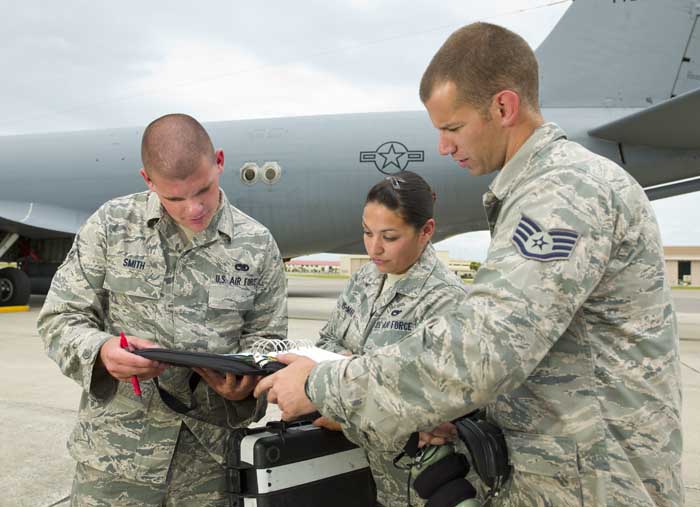
What role has Tampa Bay played in the great American Wars?
A look at how our community was shaped by those who help safeguard our nation
Spanish American War
Background: The United States declared war on Spain in April 1898 following the sinking of the Battleship Maine—a ship used to protect America’s interest in Cuba—in Havana harbor. The Spanish empire extended from what is now Virginia to the tip of South America, an area that sought freedom. The war lasted eight months until Spain and the U.S. signed a peace treaty in Paris on Dec. 10, 1898, establishing the independence of Cuba and ceding Puerto Rico, Guam and the Philippines Islands to the U.S.
Tampa Bay’s involvement: The summer of 1898 was an important one for Tampa Bay. Thirty thousand U.S. Army troops were sent to the Plant Hotel—now the University of Tampa—to prepare for their fight for Cuba’s independence from Spain. Most famous of these troops was Lieutenant Colonel Theodore “Teddy” Roosevelt and the Rough Riders, a ragtag group also known as the 1st U.S. Volunteer Cavalry unit. Seven camps were set up in Tampa Bay to house and train these troops before embarking on their journey. From DeSoto Park and Palmetto Beach to Fort Brooke, Port Tampa, Tampa Heights, Ybor City and West Tampa, these early soldiers helped shape the area’s military presence. By the end of the Spanish-American War, 66,000 troops had passed through Tampa’s ports.
American Civil War
Background: Eleven southern slave states, with former U.S. Army officer Jefferson Davis as president, declare their independence from the United States and form the Confederate States of America. Starting with the attack of Fort Sumter in 1861, America would fight the bloodiest battles ever to occur on its own soil for the resolution of economic, political and slavery disputes and state rights. In the end, more than 500,000 American lives would be lost. The war ended in 1865 when Gen. Robert E. Lee surrendered at the village of Appomattox Court House in Virginia. The Thirteenth Amendment to the U.S. Constitution would later abolish slavery.
Tampa Bay’s involvement: Both Fort Brooke and Fort De Soto played integral parts in Florida’s involvement in the Civil War. While Forts Dade and De Soto helped blockade Egmont Key, Fort Brooke endured attacks from Union troops. Fort Brooke, located at the mouth of Hillsborough River near the present-day Convention Center, saw action during the Battle of Tampa in 1862 when Union gunboats unsuccessfully tried to shell the fort and the surrounding city. More than a year later, the Union soldiers attacked again during the Battle of Fort Brooke. This time, the Confederates were met with soldiers on foot, who burned down moorings near what is now Lowry Park Zoo. That same year, the Battle of Ballast Point occurred at the intersection of what are now Gandy and Bayshore Boulevards. In May 1864, the Union overtook Fort Brooke. Less than a year later, the Civil War would end.
WWII
Background: With the announcement of Germany invading Poland on Sept. 1, 1939, France and Great Britain declare war on the Adolf Hitler-led Germans. The United States enters the war three years later when the Japanese, who were rapidly seizing European colonies in Asia to create a large defensive perimeter stretching into the Central Pacific, attacked British and American holdings in the Central Pacific, including Pearl Harbor. An estimated 50-70 million people were killed in what is considered the deadliest conflict in human history.
Tampa Bay’s involvement: In 1939, Tampa was selected to receive one of several new military airfields. The Tampa Morning Tribune’s front page on July 13, 1939 read “We Get The Big Air Base.” While the city was excited for its new air base, thousands entered the armed services—15 million nationwide and more than 20,000 local registrations. In 1940, thousands of troops flooded into Hillsborough County as Drew Field was converted into an Army Air Corps Base. MacDill Air Force Base and Drew Field were training grounds for the U.S. armed forces, which tested various land, sea and air attacks in our backyards. The two bases trained more than 125,000 troops during WWII. After the Germans surrendered, Drew Field and MacDill housed more than a thousand German prisoners of war.
Modern Warfare
From the Vietnam War and up until the first Gulf War in 1991, Tampa trained jet fighters with F-4 “Phantoms” and F-16 “Fighting Falcons.” The government ceased all flying operations at MacDill in 1993, transferring more than 100 F-16 fighters to Arizona. However, the following year brought the 6th Air Base Wing, which today is the primary operator of the U.S. Central Command, U.S. Special Operations Command and other mission partners. MacDill is also a joint partner with the 927th Air Refueling Wing and the 6th Air Mobility Wing, which perform aerial refueling responses by using KC-135 “Stratotankers” and three C-37A aircraft to help carry out the Air Force’s missions. These soldiers played a valuable role in providing airlift and transport during the Iraq War and even helped Haiti during the earthquake in 2010.